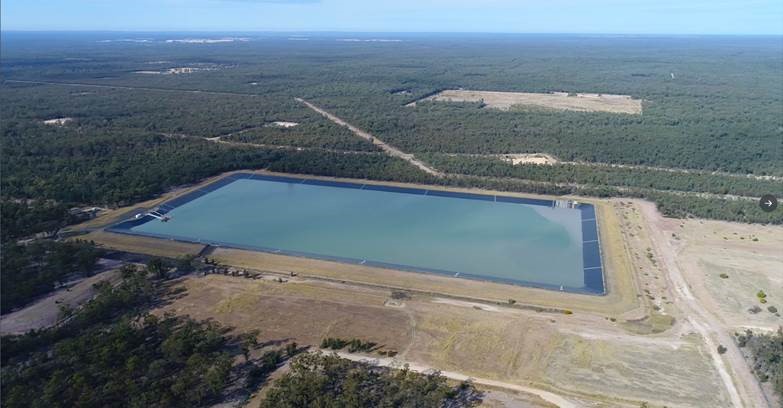Methane and holding ponds
A new CSIRO desk-top study has evaluated the potential for CSG water holding ponds to be a source of methane emissions.
The study, conducted through CSIRO’s Gas Industry Social and Environmental Research Alliance (GISERA), found limited and variable information about methane emissions from CSG holding ponds and that the true methane emissions of CSG holding ponds in Queensland is unknown.
Because of the scarcity of published data relating to CSG holding ponds, CSIRO scientists used data relating to non-industry water bodies (natural and constructed) as a proxy to estimate potential emissions from CSG holding ponds.
Potential emissions varied according to pond size, presence of additional carbon and nutrient inputs, and pond location in either temperate or sub-tropical zones.
Potential emissions ranged from 15 milligrams per square meter per day (mg/m2/d) to 30 mg/m2/d. For comparison, reported methane emissions from an urban sewage treatment plant inlet was 28,900 mg/m2/d and reported methane emissions from an 80 hectares (ha) landfill site was 35,000 mg/m2/d.
While the proxy estimates are likely to be conservative, the concentrations proposed could potentially represent a significant source of methane, given that publicly available data show Surat and Bowen Basin CSG industry holding ponds comprise almost 65,000 megalitres of water with an aggregate surface area exceeding 1,100 ha.

Image showing a CSG holding pond
New CSIRO research will shed light on methane emissions from CSG holding ponds.
The study identified opportunities for further investigation involving field work and microbiological assessment to accurately quantify methane emissions and potentially other greenhouse gases from CSG holding ponds in Queensland.
The GISERA Queensland Research Advisory Committee, which is majority controlled by community representatives, has approved two new research projects designed to address key knowledge gaps identified in the current study.
The knowledge gaps involve organic carbon inputs to holding ponds (particularly ultra-fine coal particles) and microbial dynamics with respect to methane production and consumption in these ponds.
The Methane emissions from CSG water holding ponds in Queensland project will directly measure methane emissions from CSG holding ponds, and Key controls or contributors to methane emissions from CSG water holding ponds will focus on the role that methane generating and eating microbes, algae, brine and sediment play in the methane emission contributions of CSG holding ponds.
Together the current study and the two new research projects will further refine understanding of the potential of the CSG industry to contribute to emissions in the Surat Basin/Western Downs region of Queensland.
The current study and new projects are part of a suite of research activities in Queensland addressing key areas including methane emissions, groundwater, impacts of hydraulic fracturing, potential human health impacts, and socio-economic analysis.
Find out more about other GISERA studies in Queensland
